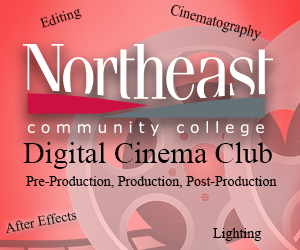John Oswald’s ‘Grayfolded’ Is The Ultimate Version Of The Grateful Dead’s Beloved ‘Dark Star’
September 16, 2014
By Randall Roberts
Warning: The Grateful Dead is the focus of this story, so there will certainly be skeptics from the outset. After all, the San Francisco band, with its extended improvised excursions, is as polarizing a group as there ever has been.
Those not already clicking ahead or flipping the page should also be aware that, specifically, today’s topic is a particular Dead song called “Dark Star,” which when performed live could stretch beyond 30 minutes. It’s one of the band’s most alluring and beloved songs. And in 1994, at the Dead’s behest, sound artist John Oswald transformed nearly 100 live recordings of the song into an epic 109-minute “ultimate” version called “Grayfolded.”
An immersive experience, equal parts mystical and baffling, wigged-out and mesmerizing, the work has just been remastered and reworked by Oswald for a new 20th-anniversary three-LP edition. Reconfiguring the original two-movement double CD, Oswald has moved pieces around, building new endings for five sides as a means to avoid fade-outs. As a result of the fresh edits, the artist considers this new version to be superior.
Featuring a layered, dynamic audio collage of nearly 25 years of performances of the song woven to create the movements, “Grayfolded” is an early touchstone of so-called mash-up culture and as such might even interest non-Deadheads. In the wake of work as varied as the Beastie Boys’ “Paul’s Boutique,” the KLF’s Justified Ancients of Mu Mu project, Christian Marclay’s turntable experiments and Oswald’s own formative pieces in the ‘70s and ‘80s, “Grayfolded” captures a moment when sonic collage was maturing, when artists toying with tape, samplers and found sound expanded their scope. Two decades later, YouTube — and much of digital culture — thrives on supercuts, mashups and unauthorized remixes.
“That transformation, and the many facets of any particular manifestation of an audio artwork, are just everywhere,” the soft-spoken Oswald, 61, said from his home in Toronto.
Oswald started distributing his early sonic experiments in the mid-1970s, when the notion of layering digital files and working cut-and-paste computer tools seemed the stuff of science fiction. Working with a process he dubbed “Plunderphonics” in a 1985 essay, the artist mined familiar recordings from dozens of artists, including the Beatles, Led Zeppelin, Dolly Parton, João Gilberto and James Brown.
He defined in a 1988 interview a so-called plunderphone as “a recognizable sonic quote, using the actual sound of something familiar which has already been recorded.” Oswald’s “Power,” for example, merged explosive Led Zeppelin bits with a tape of a fire-and-brimstone preacher letting loose with Robert Plant-ian proto-metal gusto. “Dab” is a Michael Jackson-sampled work that, according to Oswald, “consists of all the vowels Mr. Jackson sang in the recording ‘Bad.’” “O’Hell” pits competing splinters of Doors hits against one another.
Said Oswald: “Part of my curiosity is, ‘Well, if I did this, how do people react?’ Particularly, that transformation of something that’s familiar and that back in the ‘70s was seen as sacrosanct.” For his curious “Pretender,” the artist harnessed Parton’s cover of “The Great Pretender” to create a wobbly version in which her voice drunkenly moves down to male tenor and bass. It’s a dizzying experience.
In fact, two decades before last year’s YouTube meme “Slow Ass Jolene” blew up on social media, Oswald had similarly worked Parton’s recorded voice down to a sweet tenor in a version called “Jolene Both Ways.” Oswald describes this as “this weird menage a trois — both the man and the woman are after Jolene.” (Some of this work is available for free download on Oswald’s website.)
“Grayfolded” and Oswald’s much shorter, often striking, cut-and-paste tape experiments with popular music predicted a future in which sampling and reassembling recorded tones could extend beyond their then home in hip-hop culture to fuel new sound patterns. “Grayfolded” is Oswald’s most famous piece. I don’t even like the Dead all that much — but I sure love “Grayfolded.”
In the early ‘90s, Oswald said, “I tended to compress and condense things, and ‘Grayfolded’ would seem atypical in the Plunderphonic thing. But I’d been experimenting a lot with large-scale things, like taking symphonies and slowing them way down to last eight hours.” Because of format limitations, much of that work existed only as installation pieces. Describing himself as “an extremist,” the artist said he “would make very long things, and I would make very short things. ‘Grayfolded’ was one of those longer things.”
Yep. Even die-hard Deadheads may find it daunting in its double-disc incarnation: two hour-long movements, called “Transitive Axis” and “Mirror Ashes,” of meandering, often ethereal tones that fade in and out of structure and instrumentation. Layers of recordings, piled like sheets of gauze, combine solos from across decades and continents.
Though easy to get lost in, “Grayfolded” as a two-disc, or worse, a track-separated MP3 package, can also lapse into monotony. As six album sides, though, the work opens up, feels less daunting — though no less strange.
“I wanted something that worked as these approximately 20-minute chunks,” Oswald said of the new incarnation. “Somewhat to my surprise, I prefer this six-part thing to the two-part thing. And that goes back, I guess, to my early listening experiences, which was almost entirely on LP. I didn’t buy many 45s in the ‘60s, [instead] listening to things in 15- to 20-minute chunks and listening to albums that had some kind of overall design.”
Among other features, one section lasting nearly 20 minutes is an intricately woven collage of Jerry Garcia and Bob Weir guitar solos, drawn from performances across the decades. There are Garcia choirs, and Mickey Hart beat blowouts. Side 3, during a section dubbed “Fault Forces,” delivers hard distortion, a wash of textured noise, handfuls of clashing piano and guitar solos, an echoed Hart rhythm — gathered from a puzzle of tapes concentrated on 1972-74.
The fifth side is all drone and echo as Oswald guides the band through “Dark Star’s” sonic black hole: moving layers of ambient growl and feedback sets from a summer ‘74 gig at Dillon Stadium in Hartford, Conn., a set three months later at Winterland in San Francisco, a 1991 gig at North Carolina’s Greensboro Coliseum to early performances at Betty Nelson’s Organic Raspberry Farm in Sultan, Wash. (October ‘68) and 1969 shows at the Fillmore West in San Francisco.
“What the Dead do on ‘Dark Star’ is what the Dead are, that’s what they do best,” the song’s lyricist, Robert Hunter, said in the “Grayfolded” liner notes. “What defines the Dead is ‘Dark Star.’” A mystical lyric open to myriad interpretations, even Hunter found it hard to explain. “That’s just my kind of imagery, the sorts of things I see, the sort of things that occur to me to say. I can’t find any more source idea for the song. I don’t have any idea what ‘the transitive nightfall of diamonds’ means. It sounded good at the time.”
Oswald said that unlike many of his musical peers, he regularly listened to his past work, and although he hadn’t fully immersed himself in “Grayfolded” in years, he didn’t regret many of his edits. “But if there were, I changed them,” he said. “I did a bit more of what I’ve described as the whole process of this, which is folding. I didn’t get rid of the material, but I folded it upon itself. It just got a bit denser, and a bit more interesting.”
Oswald added that this project unlocked creative avenues that he continues to explore. Most recently, the composer premiered a new work, “I’d Love to Turn,” that merges three compositions — the Beatles’ “A Day in the Life,” György Ligeti’s work featured in “2001: A Space Odyssey” and Terry Riley’s “In C” — into one integrated composition. For 2011’s “b9,” he created “a condensation of the six to seven hours of music comprising the nine completed symphonies of Ludwig van Beethoven” into a 30-minute piece.
He says his evolution has been steered in part by technological progress. “It was really interesting to say, ‘Well, what if I do change this? How do people react to something that’s familiar but that’s been changed?’ Now that’s a question I don’t have to ask. There’s a greater likelihood that I can find somebody else that’s already tried that out. I can just grab it and listen to it without having to go through the process of creating something.”











